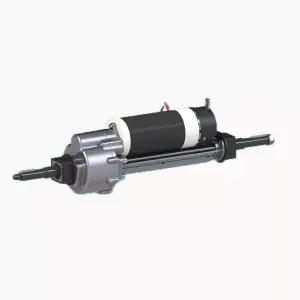When it comes to the inner workings of a vehicle, certain components can often confuse even the most experienced drivers. The transaxle dipstick is one such mysterious part. This small but important tool, found on some but not all vehicles, plays an important role in ensuring proper maintenance and function of the drivetrain. In this blog, we will delve into the topic and try to answer the frequently asked question – Does every car have a transaxle dipstick?
Learn about transaxle systems:
Before we reveal the conclusion, let us clarify what exactly a transaxle system is. Unlike traditional drivetrains, which consist of separate components such as a gearbox and differential, a transaxle integrates both functions into a single unit. In other words, the transaxle acts as a combination transmission and front axle differential.
The function of the transaxle dipstick:
Now, the focus of our discussion is the transaxle dipstick. This simple but essential tool allows vehicle owners to check the level and condition of the transmission fluid in the transaxle system. Regular fluid monitoring is essential to ensure optimal vehicle performance and to detect potential problems before they escalate into expensive repairs.
Vehicles equipped with transaxle dipstick:
Contrary to popular belief, not all vehicles are equipped with a transaxle dipstick. In fact, many modern cars and trucks no longer have this feature. The reasons behind this omission are advances in automotive technology and the transition to sealed drivetrains. Manufacturers believe that these sealing systems are designed to be maintenance-free throughout the life of the vehicle.
Sealed transfer system:
Sealed transmission systems rely on specialized fluids that can be replaced less frequently than traditional transmissions. The idea is that without a dipstick, the owner has no chance of tampering with the transmission fluid, which could do more harm than good.
Alternative transport checking methods:
While the lack of a transaxle dipstick may present a challenge for DIY owners, there are still other ways to check transmission fluid levels. Some manufacturers offer access panels or ports that allow professional technicians to inspect the fluid using specific tools. Additionally, some vehicles are equipped with electronic monitoring systems that can alert the driver when a fluid check or repair is needed.
Conclusion:
Bottom line, not all vehicles have a transaxle dipstick. Given advances in automotive technology, many manufacturers have opted for sealed drivetrains that require less owner maintenance. While this may seem inconvenient to those accustomed to the traditional dipstick method, it is crucial to adapt to these changes to ensure proper care and maintenance of our vehicles.
As the automotive industry advances, we must adopt new systems and methods to keep vehicles running smoothly. Whether your vehicle is equipped with a transaxle dipstick or not, routine service inspections and maintenance performed by a professional technician are still critical to achieving optimal vehicle performance.
So the next time you find yourself near the hood of your vehicle, consider the transaxle dipstick and recognize its importance in ensuring the longevity of your driveline – that is, if your vehicle is lucky enough to have one .
Post time: Oct-27-2023


